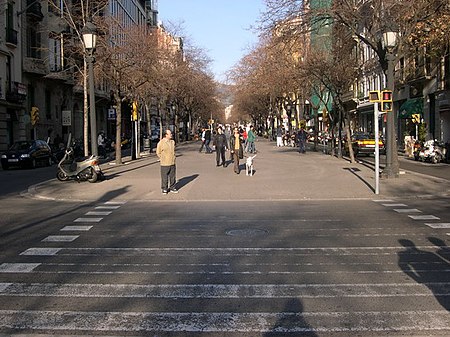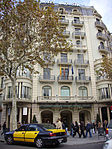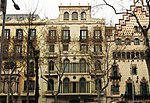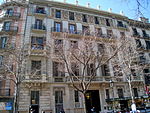Rambla de Catalunya
EixampleShopping districts and streets in CataloniaStreets in Barcelona

Rambla de Catalunya (Catalan pronunciation: [ˈramblə ðə kətəˈluɲə]; Spanish: Rambla de Cataluña) is a major street in the Eixample district of central Barcelona. It is one of the city's trendiest streets, with many international fashion shops, and is lined with lime trees.The street stretches from Plaça de Catalunya to Avinguda Diagonal, a distance of some 1.3 kilometres (0.81 mi). It runs parallel to, and between, the Passeig de Gràcia and Carrer de Balmes. It can be seen as an extension into the Eixample of the famous La Rambla.
Excerpt from the Wikipedia article Rambla de Catalunya (License: CC BY-SA 3.0, Authors, Images).Rambla de Catalunya
Rambla de Catalunya, Barcelona
Geographical coordinates (GPS) Address Nearby Places Show on map
Geographical coordinates (GPS)
| Latitude | Longitude |
|---|---|
| N 41.391666666667 ° | E 2.1627777777778 ° |
Address
Rambla de Catalunya 72
08001 Barcelona
Catalonia, Spain
Open on Google Maps










